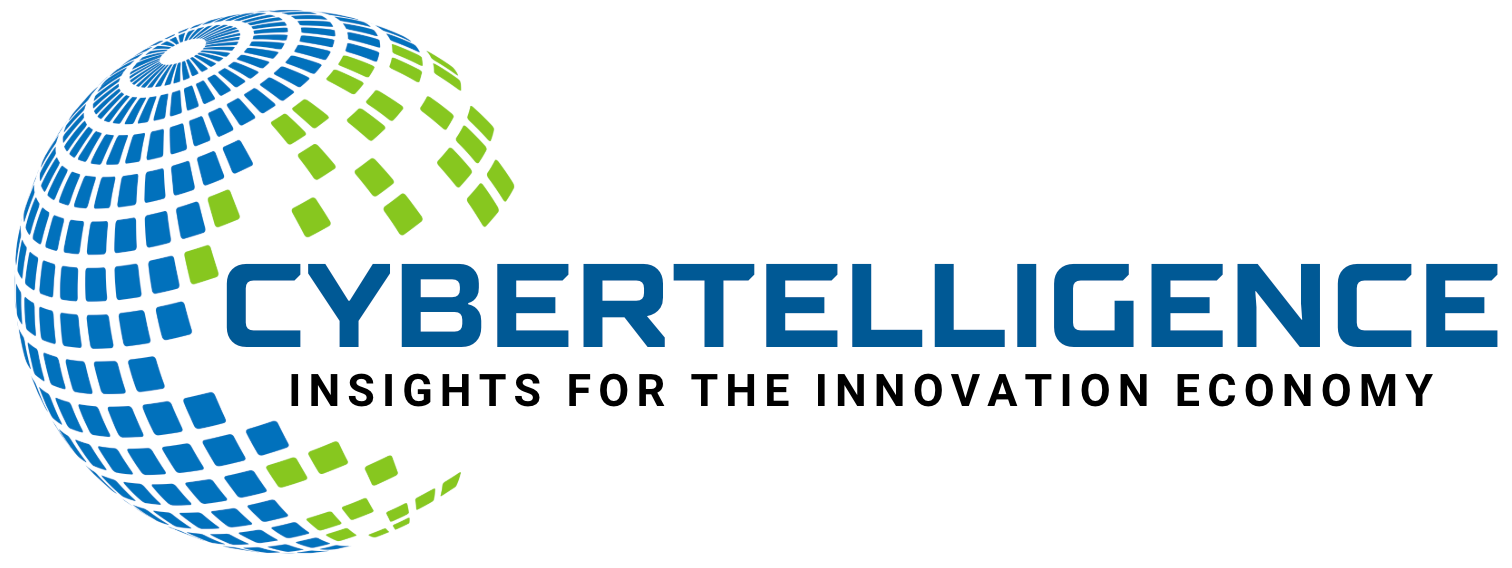The 7 Types of AI Agents Transforming Work Today
As AI continues to evolve at a breakneck pace, one of the most exciting AI trends reshaping the way we work is the rise of AI agents. These…

As AI continues to evolve at a breakneck pace, one of the most exciting AI trends reshaping the way we work is the rise of AI agents. These intelligent systems are no longer just tools that help us be more productive — they are fundamentally changing the scope and scale of what individuals and organizations can achieve. In this article, we dive into the seven types of AI agents that are driving this transformation, exploring their functionalities, real-world applications, and how businesses can leverage them for maximum impact.
Our exploration is inspired by insights from The AI Daily Brief, which breaks down these agents through multiple frameworks to help us better understand their roles and strategic value.
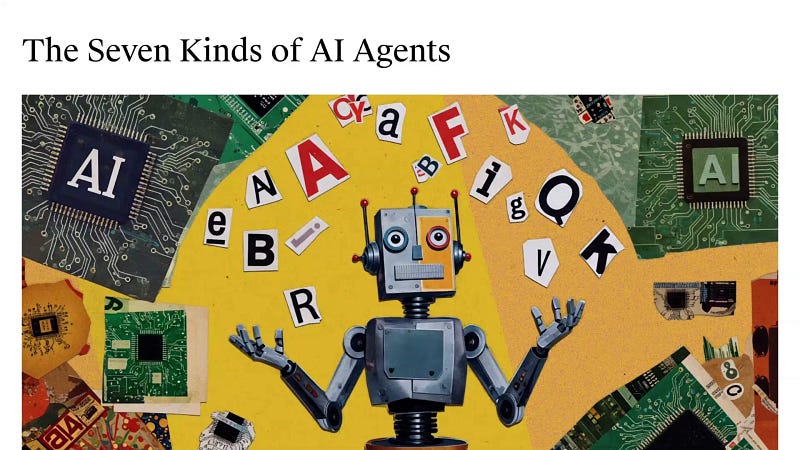
Table of Contents
- Understanding AI Agents: The Big Picture
- Classifying AI Agents: Two Frameworks to Know
- Real-World Usage and Trends Among AI Builders
- Introducing the TACO Framework: Simplifying Agent Types
- The Future is Agentic Systems and Orchestration
- Building the Right Infrastructure for AI Agents
- Preparing for the Agentic Future
- Frequently Asked Questions (FAQ)
Understanding AI Agents: The Big Picture
When we talk about AI agents, it’s important to start with a broad yet practical definition. Simply put, AI assistants are tools that we use to do things, whereas AI agents are systems that do things for us. This distinction captures the essence of the agentic era — a shift from AI as an aid to AI as an autonomous actor capable of handling tasks independently.
Recent data underscores how rapidly this shift is happening. According to a KPMG pulse survey, the percentage of organizations with fully deployed AI agents tripled from 11% to 33% between Q1 and Q2 of this year. Furthermore, 90% of surveyed organizations have moved beyond experimentation and are actively piloting or deploying agents. This means AI agents are no longer a futuristic concept — they are here and now, driving real business outcomes.
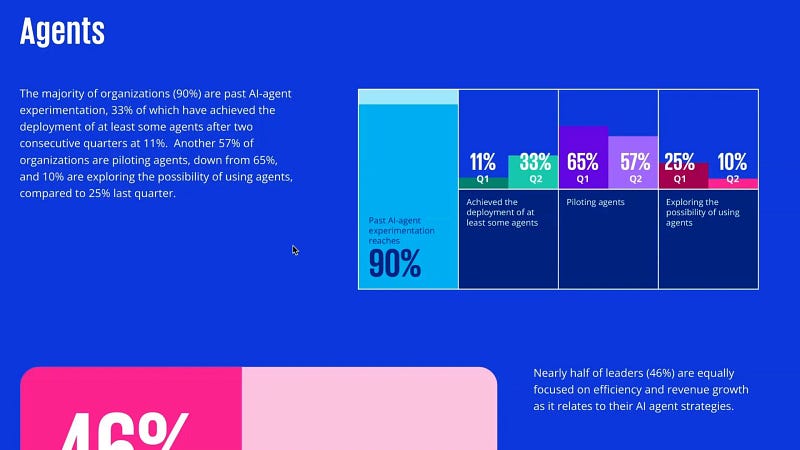
Classifying AI Agents: Two Frameworks to Know
To navigate the complex landscape of AI agents, it helps to classify them in ways that clarify their capabilities and applications. We can look at AI agents through two primary lenses:
- Functionality: How they operate and make decisions.
- Focus: The specific business outcomes or tasks they target.
1. Functional Classification of AI Agents
Functionality-based classifications reveal how agents process information and interact with their environment. Here are the seven types typically identified:
- Simple Reflex Agents: Operate on predefined rules responding to immediate inputs without memory or learning. Example: password reset agents detecting keywords in conversations.
- Model-Based Reflex Agents: Have an internal model to infer unobserved states and make better decisions based on evolving data. Example: network monitoring agents analyzing logs and metrics to detect anomalies.
- Goal-Based Agents: Plan sequences of actions to reach desired goals using a world model and state evaluation. Example: inventory management systems planning reorder schedules.
- Learning Agents: Improve behavior over time by learning from past experiences rather than relying solely on preprogrammed knowledge. Example: advanced customer service chatbots that adapt through conversations.
- Utility-Based Agents: Balance competing goals and handle trade-offs without a fixed target state. Example: flight search agents optimizing for price and travel time.
- Hierarchical Agents: Break down complex tasks into smaller ones, delegating subtasks to specialized lower-level agents and coordinating their efforts. Example: multi-layered project management systems.
- Multi-Agent Systems: Combinations of various agents working together to achieve complex goals beyond the scope of individual agents.

2. Focus-Based Classification of AI Agents
This framework looks at how agents are deployed in real-world business contexts, categorizing them by the outcomes they deliver:
- Business Task Agents: Automate routine, repetitive workflows such as data entry, invoice processing, and document classification.
- Conversational Agents: Handle customer service interactions and internal support tasks like IT or HR queries.
- Research Agents: Conduct information gathering and synthesis, empowering employees to quickly access relevant data.
- Analytics Agents: Analyze structured data to generate reports, charts, and visual insights.
- Developer Agents: Assist software developers with coding, debugging, and other programming tasks — currently one of the fastest-growing agent categories.
- Domain-Specific Agents: Specialized agents with deep knowledge in verticals such as legal, healthcare, or finance.
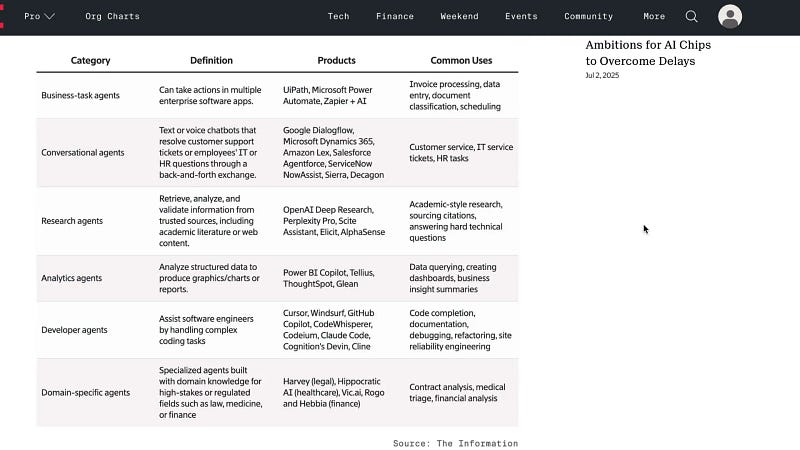
Real-World Usage and Trends Among AI Builders
Interestingly, a recent study by Iconic surveyed organizations that build AI and agent software, revealing clear trends in internal AI adoption. The most widespread use case is coding assistance, with 77% of organizations employing AI agents to aid software development.
Beyond coding, AI agents are also actively used for content generation, knowledge retrieval, product design, and business intelligence. This broad adoption highlights how AI agents are becoming embedded across diverse operational areas, reflecting the expansive potential of these technologies.

Introducing the TACO Framework: Simplifying Agent Types
To make the complexity of AI agents more accessible, KPMG developed the TACO framework, which groups agents into four intuitive categories based on task complexity, human involvement, and system integration:
- Taskers: Execute well-defined individual tasks but require human oversight.
- Automators: Handle more complex multi-system workflows with less human intervention.
- Collaborators: Act as adaptive AI teammates managing multidimensional goals alongside humans.
- Orchestrators: Transformative systems that coordinate multiple agents and tools to manage interdependent workflows across an organization.
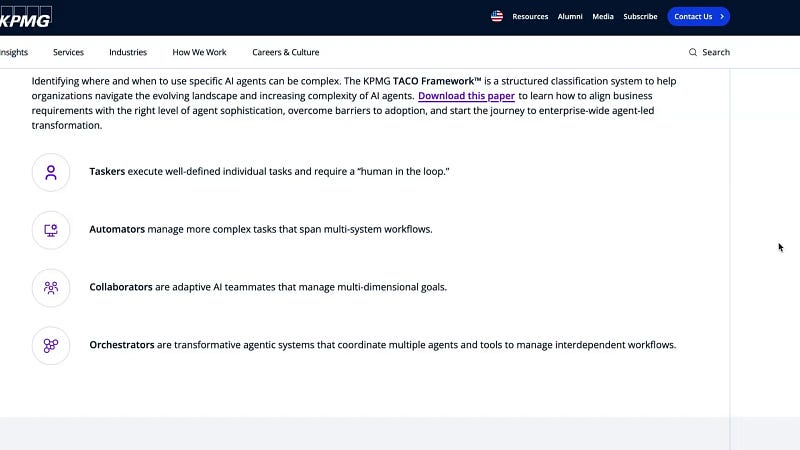
The Future is Agentic Systems and Orchestration
One of the most important AI trends we’re witnessing is the move beyond individual “spot” agents toward orchestrated, multi-agent systems. Enterprises and private equity firms are increasingly focused on how to integrate and coordinate multiple agents to tackle complex workflows.
For example, Microsoft’s recent announcements at their Build conference emphasized agent infrastructure and multi-agent orchestration capabilities within Copilot Studio, enabling agents to interact and collaborate dynamically. Supporting protocols like “agent-to-agent” communication are also emerging to facilitate this future.
While some might question whether organizations are jumping ahead by discussing multi-agent systems before fully deploying single agents, embracing this systems-thinking approach is crucial. As agents take on larger chunks of labor — some tasks previously done by humans or too complex for humans alone — comprehensive digital worker organizations will become the norm.

Building the Right Infrastructure for AI Agents
Deploying AI agents effectively requires more than just selecting use cases — it demands a robust infrastructure and tech stack. The Iconic report outlines a wide range of platform components essential for agent readiness, including:
- Model training and fine-tuning
- LLM and AI application development
- Monitoring and observability
- Inference optimization
- Model hosting and evaluation
- Data processing and feature engineering
- Vector databases and synthetic data augmentation
- Coding assistance, DevOps, and MLOps
- Product and design support
While not every organization will need to engage with all these areas, certain capabilities — like inference optimization and monitoring — are nearly universal for anyone deploying AI agents at scale.
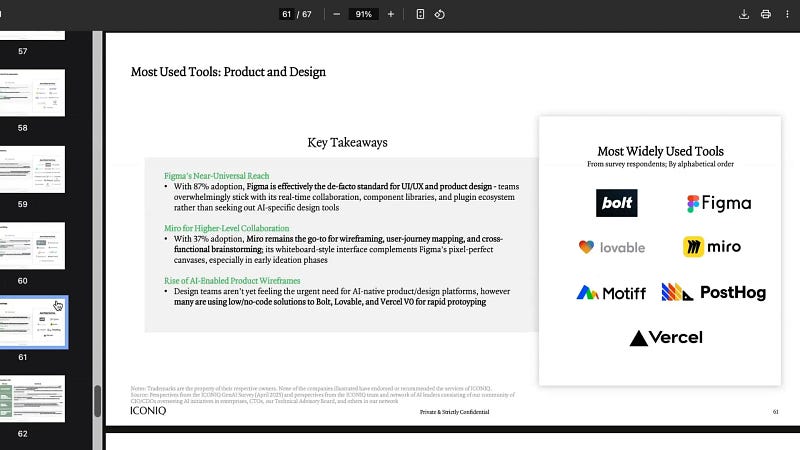
Preparing for the Agentic Future
To navigate this agentic journey, organizations should assess their current readiness and identify the highest-value use cases. Tools like the Superintelligent Agent Readiness Audit can help by interviewing leadership and teams to generate a roadmap for agent deployment and organizational change management.
Ultimately, AI agents are not monolithic. They encompass diverse capabilities and operational models. Understanding which types of agents and frameworks align best with your objectives will be a key differentiator in the coming years.
By thinking beyond individual agents and focusing on system-wide orchestration, as well as investing in the necessary infrastructure, we can unlock the full potential of this AI-driven transformation.
Frequently Asked Questions (FAQ)
What is the difference between an AI assistant and an AI agent?
An AI assistant helps you perform tasks by providing support or information, whereas an AI agent autonomously performs tasks on your behalf, often making decisions and taking actions independently.
What are the seven types of AI agents?
The seven types based on functionality include simple reflex agents, model-based reflex agents, goal-based agents, learning agents, utility-based agents, hierarchical agents, and multi-agent systems.
How are AI agents classified based on business focus?
Agents can be categorized by the outcomes they deliver: business task agents, conversational agents, research agents, analytics agents, developer agents, and domain-specific agents.
Why is multi-agent orchestration important?
As AI agents take on more complex and interdependent tasks, orchestrating multiple agents to work together efficiently is essential for maximizing their collective impact and handling workflows that exceed the capacity of individual agents.
What infrastructure is needed to support AI agents?
Key infrastructure includes model training, AI application development, monitoring, inference optimization, data processing, vector databases, and DevOps/MLOps tools, among others.
How can organizations prepare for deploying AI agents?
Organizations should evaluate their current workflows, identify valuable use cases, invest in necessary infrastructure, and consider readiness assessments like the Superintelligent Agent Readiness Audit to create a strategic roadmap.
This article is based on comprehensive research derived in part from the referenced video The 7 Types of AI Agents
